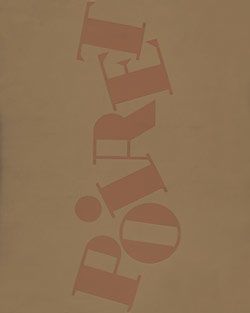Evening dress
Designer Paul Poiret French
Not on view
Poiret made several trips to the Near and Middle East throughout his career, and the influence of the decorative and structural elements of Eastern costumes informed his designs. An interesting phenomenon in Poiret’s work from 1910 onward is his manipulation and modification of authentic Middle Eastern garments. In many instances, Poiret inserted gussets of soft fabrics into the two-dimensionally conceived garments of the region to create a more supple drape to the otherwise stiffly planar garments.
In this short evening dress, Poiret retained defining elements of Middle Eastern dress and also referred to Mughal attire by inserting rigid, heavily embroidered triangular godets at either side of the skirt. The crisp outline characteristic of Mughal and Ottoman styles is subverted, however, by his use of a supple silk satin that drapes softly over the torso. Typical of Poiret’s inventiveness is his reconstruction of the basic shaping of an Indian man’s angarkha, or fitted coat, by substituting for its tight sleeves the sheer sleeves and flaring cuffs that are more commonly seen in Middle Eastern and Ottoman sources.
By placing the angled closure of the dress at the hipline, the designer conforms to the prevailing taste for a dropped waist. However, Poiret's collections invariably contained a variety of styles referencing disparate cultures and periods and represented radically differing silhouettes. His constant admonition to women to dress to their own body type, coloring, and preference, appears to be reflected in his presentation of diverse choices. But in the judgment of time, it is with his persistent theme of orientalism that the designer was able to best merge his structural modernity with his taste for sumptuous visual effects.
Due to rights restrictions, this image cannot be enlarged, viewed at full screen, or downloaded.
This artwork is meant to be viewed from right to left. Scroll left to view more.








